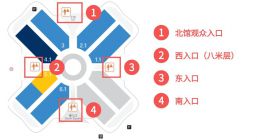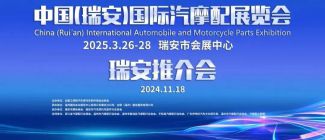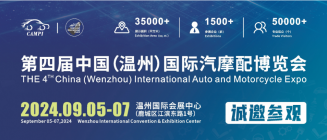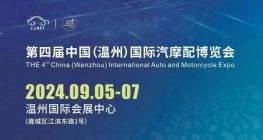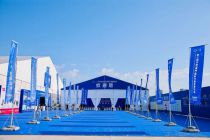Scan QRCode

The era of big engines and high fuel consumption is over, and the car industry is poised for a change.
On July 1, the national Six emission standard was formally implemented nationwide, and the production and customs clearance and import of National Five models were stopped, and a six-month transition period for national Five sales was officially launched. By January 1, 2021, the sale and registration of light vehicles that do not meet national Vi standards will be banned.
On July 1 last year, 18 provinces and cities entered the sixth National Day. But according to data from China Association of Automobile Manufacturers (hereinafter referred to as "China Automobile Association"), the penetration rate of self-owned brands in China was only 2% in March last year. Some auto companies not only need to clear the inventory at a discount, but also need to produce new models that meet the standards of China Six as soon as possible, which accelerated the car companies' brand shuffling under the pressure.
After a year, the mainstream models basically completed the six upgrade. Data from China Automobile Association shows that by the end of March this year, there were 3,399,700 passenger vehicles in stock, with the six models accounting for 87% of the total. The implementation of the six standards will not bring much shock to the industry.
However, as the six standards involve the comprehensive technology upgrade of the system, vehicle enterprises lacking independent research and development ability or even relying on technology introduction are likely to be eliminated. The industrial chain reform brought about by the six standards may open a new ten-billion market.
The car market polarization intensifies
The six emission standards are divided into six a standards in the early stage and six B standards in the later stage. The six B emission standards are even more stringent than Euro six (European Sixth Generation Emission Standards).
According to the requirements, the switch from Country 5 to Country 6 A will be completed nationwide in 2020, and the standard of Country 6 B will be implemented in 2023. Fifteen provinces and cities, including Beijing, Shanghai and Jiangsu, have implemented the standard, and nearly 70 percent of China's auto sales have, according to Calculations by Everbright Securities.
Implementation time of emission standards for light gasoline vehicles
For light vehicles, the national Six standards mainly strengthen the requirements in three aspects.
First of all, the cycle condition is changed from NEDC (new European standard test cycle) to WLTC (global light Vehicle test cycle). The oEMS need to test again according to WLTC standard. If they fail to meet the standard, they will face the risk of withdrawal from the market. For pure electric cars, WLTC testing is more rigorous and the range may be reduced.
Secondly, compared with the fifth standard, the five emission requirements of the sixth B are improved by 33%-50% respectively, and the assessment of PN (solid suspended particle quality/particle quantity) and N2O (nitrous oxide) is increased.
In addition, the six standards have also added assessment procedures, including actual road driving emission test, VOCs (fixed source exhaust gas) emission test during refueling, OBD (on-board diagnostic) system monitoring, and emission quality guarantee period.
Light type I gasoline vehicle (M1) Type I test emission limits Source: Everbright Securities Research Institute
After 18 provinces and cities switched to the sixth national standard in advance last year, car companies have begun to plan ahead. Although it is still in the switching period of stage VI A, Geely has announced that it has completed the certification of national Vi B models in tianjin, Chongqing and Shanghai, upgraded national VI B models in all its models, and promised that "the technology will be upgraded, and the price of National VI B products will not be increased". Volkswagen, Toyota, Harvard, Wuling Hongguang and other brands have also launched six B standard models.
However, some automakers have failed to upgrade their models and have no cars to sell in China's six markets.
Cui Dongshu, secretary-general of the All-China Federation of Passenger Transport, said in an interview with China Business News that the emission upgrade does bring some pressure to weak car companies, but another important reason for accelerating the survival of the fittest is that competition in the small and medium-sized SUV market is intensifying. Due to the encroachment of joint-venture brands, the market space of self-owned brands is further squeezed, and the operation pressure brought by the impact of the epidemic, the polarization of the automobile market will be further accelerated this year.
"Currently, the core technologies to achieve emission upgrades are monopolized by foreign component companies such as Bosch. Technologically, they can all meet the standards, but the cost pressures will vary from company to company." Cui Dongshu said that the emission upgrade will benefit the upstream parts companies.
The rise of the six industrial chains
Most brokerages believe that the stricter requirements on exhaust emissions will directly drive the replacement and increase demand for some products in the automotive, non-ferrous metals, machinery and chemical industry chains.
China Merchants Securities estimates that the upgrade of national Standard will greatly increase the value of exhaust treatment system by 2-3 times, and the market size will reach about 100 billion yuan in 2021, an increase of 60 billion to 70 billion yuan compared with National Five. Everbright Securities predicts that in 2020, the market size of automotive reprocessing system will be about 65.5 billion yuan, an increase of 25% over the same period last year, and the increase will be mainly contributed by the upgrading of passenger vehicle Industry. The market size will reach 72.6 billion yuan in 2021, up 11% year-on-year, with the increase mainly contributed by diesel commercial vehicles.
Weifu Gaoke, a domestic tail gas reprocessing head enterprise, was rated "overweight" by Everbright Securities due to its deep binding with Bosch and the prospect of marginal improvement in automotive reprocessing business performance with the upgrade of China six heavy truck emission standards in 2021.
In addition, the six standards are expected to increase the demand for PLATINUM group metals.
According to the World Platinum Council, the amount of catalysts used for single-cycle exhaust will be significantly increased to meet the sixth national emission standard, while the amount of palladium and rhodium will be increased by 40% and 50-100% respectively. When the sixth National Standard for heavy-duty diesel vehicles is implemented in 2021, the comprehensive upgrade of diesel exhaust treatment process will also increase platinum consumption.
Industrial Securities said that the medium and long term optimistic fuel cell vehicle industry development to the platinum demand. Everbright Securities also believes that vehicle exhaust treatment process and route upgrade is expected to boost platinum metals demand and price trend. Both brokers recommended China's PLATINUM group metals recycling and tail gas catalyst industry leader, CoPLatin. Since April 28, The shares have risen more than 130%.
Change of national standard exhaust gas treatment device
In addition, due to the necessity of catalytic reduction and particle filtration devices, the demand for catalytic materials and raw materials has increased, which has been good for tailpipe treatment equipment manufacturers in the automobile exhaust emission industry chain, as well as related chemical industries such as honeycomb ceramic materials, zeolite molecular sieve and urea for vehicles.
According to guoxin Securities, in 2020, the market space of honeycomb ceramic materials will reach 5 billion yuan, the market scale of zeolite molecular sieve will reach 2.25 billion yuan, and the market scale of urea for vehicles will reach 5 billion yuan.
The landing of national six standards may drive the localization of automobile reprocessing market. Bosch, Cummins, Meinko and other foreign-invested enterprises have the right to speak in the post-processing market of China's fifth stage. The sixth stage DPF (diesel vehicle particle catcher) and GPF (gasoline vehicle particle catcher) are incremental markets, which are expected to become opportunities for domestic parts enterprises to overtake cars on the curve.
AMS2024 Exhibition Guide | Comprehensive Exhibition Guide, Don't Miss the Exciting Events Online and Offline
Notice on Holding the Rui'an Promotion Conference for the 2025 China (Rui'an) International Automobile and Motorcycle Parts Exhibition
On September 5th, we invite you to join us at the Wenzhou Auto Parts Exhibition on a journey to trace the origin of the Auto Parts City, as per the invitation from the purchaser!
Hot Booking | AAPEX 2024- Professional Exhibition Channel for Entering the North American Auto Parts Market
The wind is just right, Qianchuan Hui! Looking forward to working with you at the 2024 Wenzhou Auto Parts Exhibition and composing a new chapter!
Live up to Shaohua | Wenzhou Auto Parts Exhibition, these wonderful moments are worth remembering!
Free support line!
Email Support!
Working Days/Hours!
